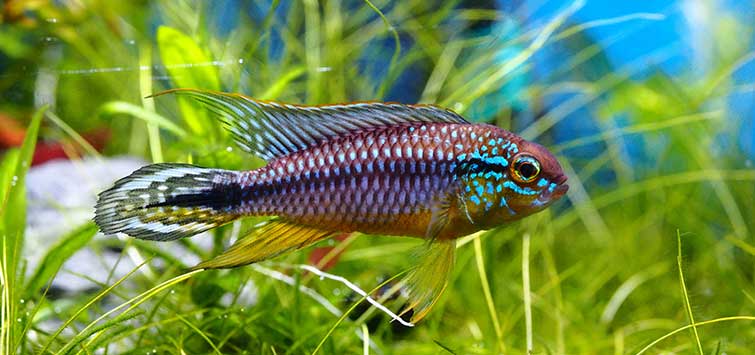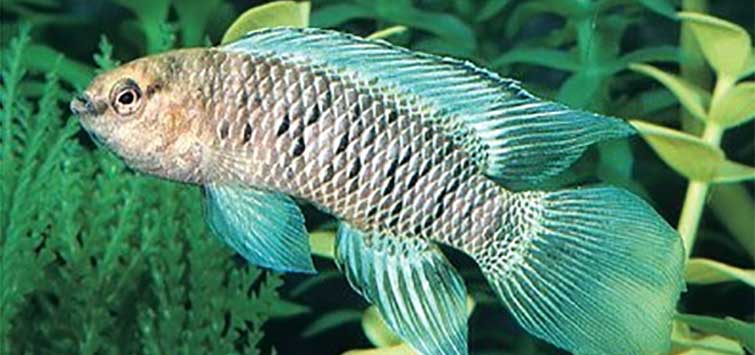Apistogramma agassizii
Common Names: Agassiz's dwarf cichlid, apisto, agassizii
Type Locality: Curupira, Codajas, Rio Poti de Sao Joao, Lago Maximo, and Lago Manacapuru, Brazil
Range: Widespread in the Amazon basin, found in clear-, black-, and whitewater habitats in the Amazon-Solimoes River from Peru through Brazil to the Capim River Basin.
Taxonomic Troubles: Originally described as Geophagus (Mesops) agassizii.
Size: 5 cm TL (2 inches).
Preferred Water Chemistry: Warm tropical, pH acidic to neutral, from zero to medium hardness.
Difficulty: Moderate. One of the most widely kept and captive-bred dwarf cichlids. Not as fussy about water chemistry as some other apistos.
Tank Setup: The ideal is a biotope setup, with a substrate of
Feeding: Naturally a micropredator; prefers live or frozen foods.
Breeding: Although many breeders keep pairs in small aquaria, more natural is a large aquarium with a male and several females.
Fish Description
The races are variable, with blue and gold predominating. Breeding females are yellow.
Notes
This is the default apisto, known by aquarists by decades. Even with the dozens of new species on the market, this old favorite remains. Because of its wide range of natural habitats, and because of its many generations in captivity, this apisto does not require the super-soft, low-pH water many of its congeners demand. This makes it a perfect choice for someone wanting to try the American dwarf cichlids. The fish in the genus Apistogramma are known for considerable plasticity in breeding behaviors, which range from bottom cave spawning to spawning in nooks near the surface, from pair spawning to harem spawning. There is even a mouthbrooding species! Sometimes a single fish will alter its breeding behavior. You will see the greatest variety of natural behaviors when the fish are kept in large aquaria with several females per male.

.png?h=595&iar=0&w=2781&hash=5FD5E69473BCC22199FBFA2FB71B6033)



